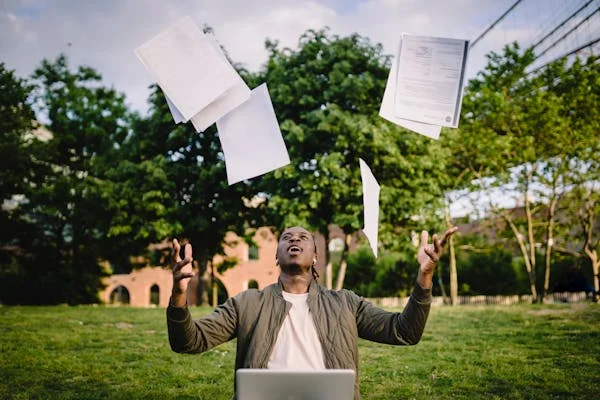Formal Letter Structure
Parts of a Letter
A formal letter, such as a professional or cover letter, typically consists of several key components, including the sender’s address, date, recipient’s address, salutation, body, closing, and signature.
Sender’s Address
The sender’s address is usually placed at the top of the letter. The formal letter structure includes the sender’s name, street address, city, state, and zip code.
Date
Following the sender’s address, the date is crucial for record-keeping purposes. It should be written in a specific format, such as “January 1, 2023.”
Recipient’s Address
The recipient’s address comes after the date. It includes the recipient’s name, title, company name, and their address.
Salutation
The salutation is the greeting at the beginning of the letter. Common salutations include “Dear Mr./Ms. [Recipient’s Last Name]” or “To Whom It May Concern.”
Body
The body of the letter contains the main message or content. It should be organized into paragraphs with clear and concise information.
Closing
The closing of a formal letter signals the end of the communication. Typical closings include “Sincerely,” “Regards,” or “Yours faithfully.”
Signature
The signature is essential for authenticity. It should be handwritten above the sender’s typed name.
Examples of Formal Letters
Job Application
Formal letters are commonly used in job applications. When applying for a job, it is crucial to address the hiring manager formally. Begin with your contact information, the date and the recipient’s details. Express your interest in the position clearly. Provide a brief overview of your qualifications and why you are suitable for the role.
Complaint Letter
Another common type of formal letter is a complaint letter. When writing a complaint letter, be polite but firm. Start by stating the issue concisely and providing any necessary background information. Clearly outline your grievances and suggest potential solutions. End the letter with a polite request for resolution.
Business Proposal
Formal letters are essential for submitting business proposals. In a business proposal, clearly outline the purpose of the proposal and how it aligns with the recipient’s needs. Highlight the benefits of your proposal and provide supporting evidence or data. End with a call to action, inviting further discussion or collaboration by providing a contact form.
Understanding Letter Formats
Types of Formats
Letters can be formatted in various ways, including block, modified, and semi-block formats. In a block format, the entire text is left-aligned with single-spaced paragraphs. The modified block format aligns elements differently, with the date and closing aligned in the centre. On the other hand, a semi-block format positions some aspects at the centre while others are left-aligned.
Elements of a Letter
Critical components of a letter include the sender’s address, date, recipient’s address, salutation, body, closing, and signature. The sender’s address typically appears at the top of the letter, followed by the date. The recipient’s address comes next, followed by the salutation addressing the recipient.
Formatting Guidelines
When writing a letter, it’s essential to follow specific formatting guidelines. Use clear and concise language to convey your message effectively. Ensure that the letter is well-structured, with each section clearly defined. Maintain a professional tone throughout the letter to create a positive impression on the recipient.
Block Letter Style
Alignment
Block letter style is characterized by left-aligned text, where all parts of the letter, including the date, address, salutation, body, and closing, are aligned along the left margin. This creates a clean and professional look for the letter.
Using the block letter style, each letter section starts at the left margin without an indentation. This format is commonly used in formal business correspondence and official letters.
Structure
In a block letter, the sender’s address, date, recipient’s address, salutation, body of the letter, and closing are placed in specific positions within the layout. The sender’s address and the date appear at the top of the letter, followed by the recipient’s address and salutation.
The body of the letter is written below the salutation, followed by a closing, such as “Sincerely” or “Regards”, aligned with the left margin. Leaving a blank line between each section for clarity and form is essential.
Appearance
One of the key advantages of using the block letter style is its professional appearance. The structured layout and alignment make the content easy to read and understand. However, a potential drawback is that it may seem too formal for certain casual correspondences.
Modified Block Letter Style
Alignment
When using the Modified Block Letter Style, the date, closing, and signature block are aligned at the centre or right of the page.
The body of the letter starts at the left margin, just like in the whole block style. This alignment gives the letter a professional and organized look.
Contact Information
In this style, your contact information is placed at the top of the page, justified to the right. It includes your name, address, city, state, and zip code.
Including your contact information helps the recipient quickly identify who the letter is from and how to respond.
Pros and Cons
-
Pros:
-
Offers a balanced look between formal and friendly styles.
-
Allows for a clear separation between different sections of the letter.
-
-
Cons:
-
It can be time-consuming to format correctly.
-
Requires careful attention to detail to ensure proper alignment.
-
Examples
Here are some situations where using a modified block letter style can be beneficial:
-
Writing a cover letter for a job application.
-
Sending a formal business communication to a client.
Semi-Block Letter Style
Alignment
The semi-block letter style is similar to the modified block format, with the only difference being the date, closing, and signature alignment.
The date, closing, and signature are aligned at the centre in a semi-block letter, unlike the modified block, which is aligned to the right.
Pros and Cons
-
Pros:
-
Offers a professional appearance.
-
Easy to read and understand due to clear sections.
-
-
Cons:
-
It may appear less formal compared to the full-block style.
-
Requires careful attention to alignment for a polished look.
-
Usage
This style is commonly used in informal business communication or personal letters. It balances the formal full block style and the more casual modified block format.
When writing a semi-block letter, ensure that all elements, such as the sender’s address, date, recipient’s address, salutation, body paragraphs, closing, and signature, are appropriately placed within the format.
Writing a Formal Letter Guide
Structure Overview
When crafting a formal letter, following a specific structure is crucial. Begin with your address and the date, followed by the recipient’s address.
After that, include a formal salutation such as “Dear Mr./Ms. [Recipient’s Last Name],”. Next, compose the body of the letter, addressing the purpose clearly and concisely.
Tone and Language
Maintain a professional tone throughout the letter. Avoid using slang or informal language. Be clear and direct in your communication to convey your message effectively.
Closing and Signature
End the letter with an appropriate closing, such as “Sincerely” or “Yours faithfully,” followed by your signature. Ensure enough space between the closing and your printed name for the signature.
Additional Tips
-
Proofread your letter carefully to correct any errors.
-
Keep the content formal and relevant to the topic at hand.
-
Use formal language and avoid contractions like “don’t” or “can’t.”
Definition of a Formal Letter
Structure
A formal letter typically follows a specific structure to ensure clarity and professionalism. The structure includes the sender’s address, date, recipient’s address, salutation, body paragraphs, closing, and signature.
Language
Formal letters should use professional language and avoid contractions or slang. The tone should be polite, respectful, and straightforward to convey the intended message effectively.
Purpose
Formal letters serve various purposes, such as requesting information, making inquiries, lodging complaints, expressing appreciation, or applying for a job. They are essential for official communication in business, education, and other formal settings.
Formatting
Proper formatting is crucial in formal letters. Margins should be set appropriately, and the font style and size should be formal. Spacing between paragraphs and sections should be consistent for a neat appearance.
Purpose of Sending Formal Letters
Importance
Formal letters are crucial in various settings, including business, education, and government. They convey professionalism and are essential for official communication.
Formal letters address serious matters such as job applications, complaints, inquiries, or requests for information. They ensure clarity and formality in communication.
Structure
Formal letters have a specific structure, including the sender’s address, date, recipient’s address, salutation, body paragraphs, closing, and signature. This structure maintains organization in the letter.
The formal tone used in these letters establishes respect and seriousness. It is essential to follow formatting guidelines to create a polished document.
Examples
-
Job Application: A formal letter is used to apply for a job position in a well-structured format.
-
Complaint Letter: When dissatisfied with a product or service, a formal complaint letter can help resolve issues effectively.
Components of a Formal Letter
Structure
A formal letter typically comprises six components: sender’s address, date, recipient’s address, salutation, body, and closing. Each part serves a specific purpose in conveying information.
The sender’s address is placed at the top right corner, followed by the date. This ensures the recipient knows who the letter is from and when it was written.
Salutation and Body
The salutation, such as “Dear Mr. Smith,” introduces the recipient. It sets the tone for the rest of the letter. The body contains the main message or purpose of the letter. It should be concise and to the point.
Closing
The closing includes phrases like “Sincerely” or “Yours faithfully,” followed by the sender’s name. It signifies the end of the letter and shows respect towards the recipient.
-
Pros: Provides a clear structure for effective communication.
-
Cons: Can be seen as rigid or overly formal in some contexts.
Header Details (Date/Address)
Date
When writing a formal letter, the date is an essential component that should be placed at the paper’s top right or left corner. It helps establish the timeline of the correspondence. For instance, “February 15, 2023.”
Address
The address in a formal letter includes both the sender’s and recipient’s details. The sender’s address appears at the top right corner, while the recipient’s address is positioned below it on the left side. Ensure that the recipient’s full name, title, company name (if applicable), and address are included.
Formatting
Proper formatting is crucial for the header details section. Use a consistent format throughout the letter. Align the dates and addresses correctly to maintain a professional appearance. Consider using a formal font style like Times New Roman or Arial.
Examples
To better understand how to structure header details, consider the following examples:
-
Date: May 20, 2022
-
Sender’s Address: John Doe 123 Main Street City, State ZIP Code
Recipient’s Address: Jane Smith ABC Company 456 Business Avenue City, State ZIP Code
Greeting Section
Opening Salutation
The greeting section is where you begin your letter with an opening salutation. This sets the tone for the rest of the letter. Address the recipient by their name, such as “Dear Mr. Smith” or “To whom it may concern.” Avoid using informal greetings in professional or formal letters.
When crafting your opening salutation, consider your relationship with the recipient. Tailor your greeting based on whether you are writing to a close friend, a business associate, or a potential employer. Personalizing your salutation can create a more meaningful connection with the reader.
Formal vs. Informal Greetings
In the greeting section, it’s crucial to distinguish between formal and informal greetings. Formal letters typically require a more structured and respectful approach, using titles like “Mr.” or “Ms.” In contrast, informal letters allow for casual greetings like “Hi” or “Hello.”
When deciding on the appropriate greeting, consider the context of your letter. For instance, a formal greeting is preferred ifr you are writing a cover letter for a job application. Howeved, an informal greeting may be more suitable.
Main Content Section
Address Section
In the address section, include the recipient’s address aligned to the left margin. Below that, provide the date of writing the letter. Ensuring accuracy in both the address and date for formal correspondence is crucial.
When writing an address, begin with the recipient’s name, followed by their title, company name (if applicable), street address, city, state, and zip code. The date should include the month, day, and year.
Salutation Section
The salutation section is where you greet the recipient. Use “Dear” followed by their title and last name if known. If unsure about the recipient’s gender or title, opt for a neutral greeting like “To Whom It May Concern.”
Ensure to use a colon after the recipient’s name for formal letters. A comma can be used after the recipient’s name for informal letters. The salutation sets the tone for the rest of the letter.
Body Section
The body section is where you convey your message concisely and clearly. Organize your thoughts into paragraphs for better readability. Start each paragraph with a topic sentence to guide the reader through your points.
When composing the body of the letter, maintain a respectful and professional tone. Provide relevant details or information supporting your purpose for writing the letter.
Closing Statement
Key Elements
When concluding a letter, it is crucial to include key elements that effectively wrap up the message. Express gratitude for the recipient’s time and attention. Reiterate the primary purpose of the letter to reinforce its importance.
It is essential to offer assistance or further communication if needed. This shows a willingness to engage beyond the current correspondence. Including a polite closing remark such as “Sincerely” or “Best regards” adds a personal touch to the letter.
Formatting Tips
Ensure that the closing statement is positioned appropriately at the end of the letter, following the main body and any attachments. For clarity, leave a blank line between the final paragraph and the closing statement.
Avoid using overly formal language in the closing statement, maintaining a professional yet friendly tone. Keep the closing concise but warm and respectful to leave a positive impression on the recipient.
Signature Area
Importance
The signature area in a letter holds significant importance as it signifies the authenticity and validity of the document. It typically includes the sender’s name, title, and contact information.
Including a precise and professional signature area ensures that the recipient can quickly identify the sender and establish communication if needed. This section adds a personal touch to the letter, enhancing its credibility and professionalism.
Components
The signature area usually consists of the sender’s full name, followed by their job title or position within the organization. Contact information such as phone number and email address may be included for further correspondence.
A well-crafted signature area provides essential details about the sender and reflects their professionalism and attention to detail. It gives the recipient a final impression, leaving a lasting impact.
Steps to Write a Formal Letter
Addressing the Recipient
When writing a formal letter, address the recipient using their full name and professional title if known.
Begin the letter with the recipient’s address aligned to the left margin. Include the date below the address.
Opening Salutation
Start the letter with a formal salutation such as “Dear Mr./Ms. [Last Name],” followed by a colon.
Avoid using casual greetings like “Hi” or “Hello” in formal letters.
Body of the Letter
In the body, express your purpose clearly and concisely. Use formal language and maintain a professional tone throughout.
Break down your content into paragraphs for clarity. Each paragraph should focus on a single point.
Closing the Letter
Conclude the letter with a formal closing, such as “Sincerely” or “Yours faithfully,” followed by a comma.
Leave four lines for your signature between the closing and your typed name.
Mistakes to Avoid in Letters
Lack of Clarity
Ensure your letter is clear and concise, avoiding any ambiguity. Clearly state the purpose and main points.
Poor Grammar and Spelling
Grammatical errors can harm your credibility. Proofread your letter carefully before sending it out.
Incorrect Addressing
Always double-check the recipient’s name and address. Using the wrong details can lead to miscommunication.
Lengthy and Wordy Content
Keep your letter brief and to the point. Avoid unnecessary details that can confuse the reader.
Inappropriate Tone
Maintain a professional tone throughout your letter. Avoid using slang or informal language.
-
Pros:
-
Clear communication
-
Professionalism maintained
-
-
Cons:
-
Miscommunication due to errors
-
Loss of credibility
-
Remember, a well-crafted letter reflects positively on your communication skills. By avoiding these common mistakes, you can ensure that your message is effectively conveyed.
Essential Business Letter Formats
Standard Format
When drafting a business letter, start with the sender’s address followed by the date. Then, add the recipient’s address and a salutation.
One of the key benefits of the standard format is its professional appearance. It helps establish credibility and ensures clarity in communication.
Modified Block Format
The date, closing, and signature are aligned to the right in this format. However, the subject line and complimentary close remain centred.
Consistency is crucial in the modified block format to maintain a polished look and facilitate easy reading for recipients.
Semi-Block Format
Like the modified block format, the semi-block format aligns the date, closing, and signature to the right. The subject line, complimentary close, and signature block are centred.
Semi-block format can help make your letter appear more modern and visually appealing.






